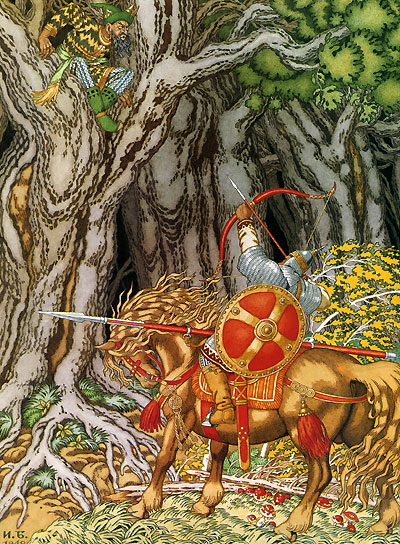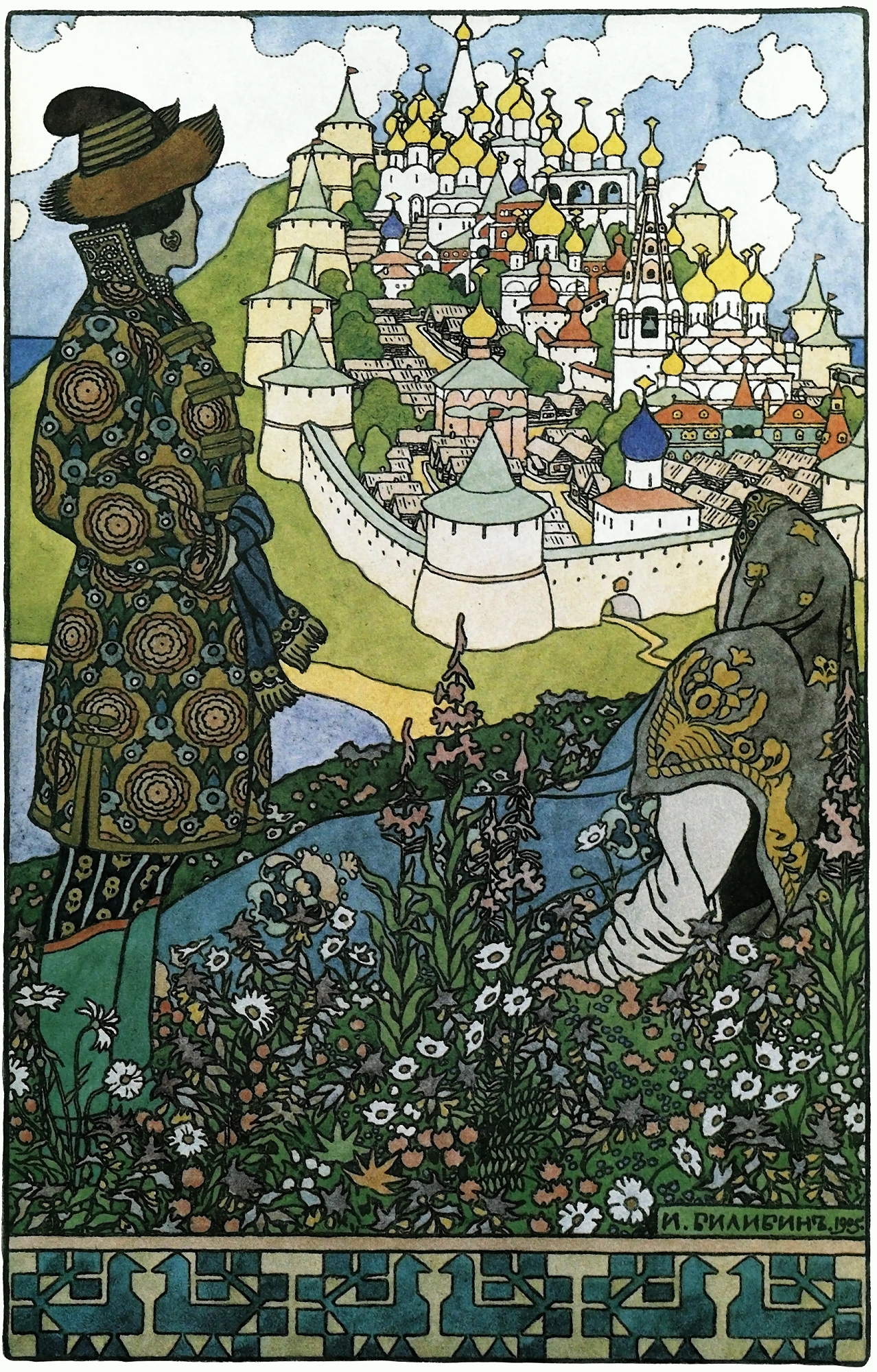"Tsarevich Ivan catches the Feather of the Firebird," 1899
Welcome to the Cabinet, comrades! I have a tale of Old Mother Russia for you today!
Ivan Yakovlevich Bilibin (1876 - 1942) was a Russian illustrator and designer that drew upon Slavic folklore in his work. He was born in St. Petersburg, the son of a doctor, and trained as a lawyer, but decided to study art in Munich, Germany and St. Petersburg / Petrograd / Leningrad. From 1902 to 1904, Bilibin traveled extensively in the northern Russian countryside, cementing his interest in Russian myths and legends. He wrote a study of the subject, Folk Arts of the Russian North, published in 1904. Bilibin also drew inspiration from Japanese prints by artists like Hiroshige and Hokusai (just look at your Great Wave mousepad).
Ivan Yakovlevich Bilibin (1876 - 1942) was a Russian illustrator and designer that drew upon Slavic folklore in his work. He was born in St. Petersburg, the son of a doctor, and trained as a lawyer, but decided to study art in Munich, Germany and St. Petersburg / Petrograd / Leningrad. From 1902 to 1904, Bilibin traveled extensively in the northern Russian countryside, cementing his interest in Russian myths and legends. He wrote a study of the subject, Folk Arts of the Russian North, published in 1904. Bilibin also drew inspiration from Japanese prints by artists like Hiroshige and Hokusai (just look at your Great Wave mousepad).
Portrait of the Artist as a Young Dandy, from 1901.
He became famous in Russia when he released his illustrations of Russian fairy tales, commissioned by that bastion of great art, the Department for the Production of State Documents, in 1899. As in the case of many Russian artists and writers, the 1917 Revolution did not agree with Bilibin. He lived for a time in Egypt, settling in the "Little Russia" section of gay Paris in 1925. To earn some francs, he lowered himself to tastefully decorating the mansions of the Parisian First Estate.
Bilibin, however, still longed for the embrace of Mother Russia (although he got Father Stalin instead). He returned to his homeland in 1936, becoming Professor of Graphic Art at the Leningrad Academy of Arts. Luckily for him, Bilibin arrived back in the U.S.S.R. just in time to catch the the Great Fatherland War, which began in 1939 (although Russians tend to leave out the two years when they were allies with a certain National Socialist state). Bilibin died during the siege of Leningrad by the Nazis, which lasted 872 days and claimed the lives of over one million Soviet soldiers (1/3) and civilians (2/3).
So Bilibin's life had its ups and downs. Okay, maybe more downs, because he was Russian. But he produced some really beautiful and interesting illustrations of Russian folklore, which the Cabinet generously shares below. (By the way, here's an interesting recent article on Bibilin.)
"Vasilisa," from Vasilisa the Beautiful, 1909.

"The Red Horseman," from the same work.
"The Beautiful Black Horseman," from the same work.
Probably from Vasilisa the Beautiful.
Illustration to Alexander Pushkin's Ruslan and Lyudmila, 1917.
"St. Boris and Gleb," c. 1900.
"The Flying Mosquito," from The Tale of the Tsar Saltan, 1905.
"The Merchants Visit the Tsar Saltan," from the same work.
"The Island of Buyan," from the same work.

"Ilya Muromets and Nightingale the Robber"
Design sketch for the the Palace of Dodona, from the Rimsky-Korsakov opera The Golden Cockerel, 1909.
"Tsar Dadon Stands before the Shemakha Queen," for The Golden Cockerel.
"Bogatyr Volga and Mikula Selaninovits," 1940.
If you've made it this far, you're either crazy about Russian folktales or have great admiration for your Humble Author. Either way, here's to another installment of the Cabinet!














This is gonna be my dissertation!
ReplyDelete